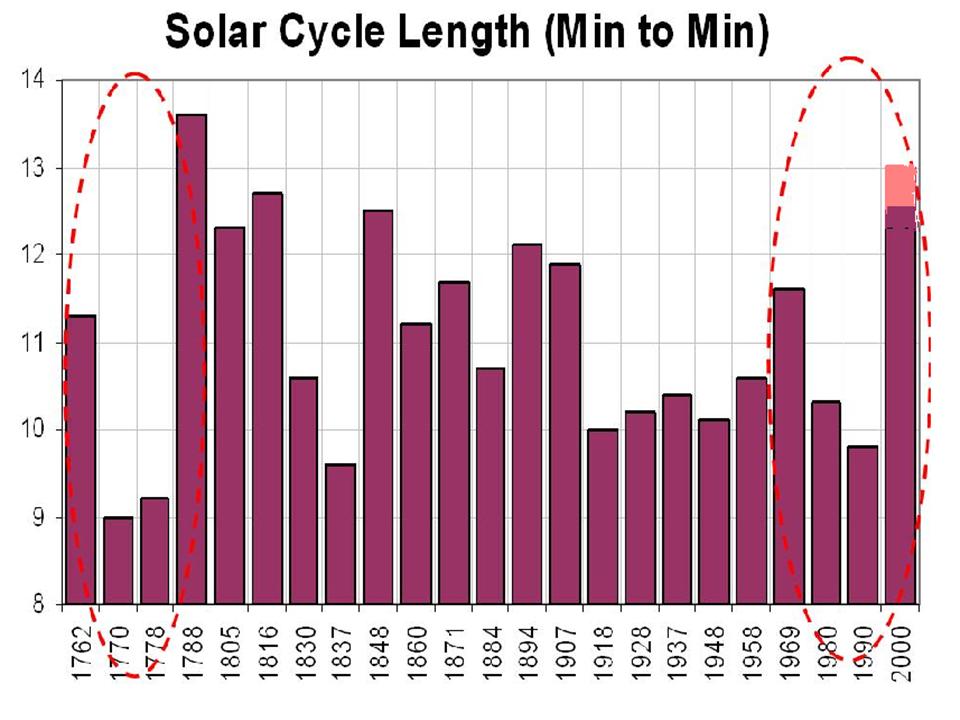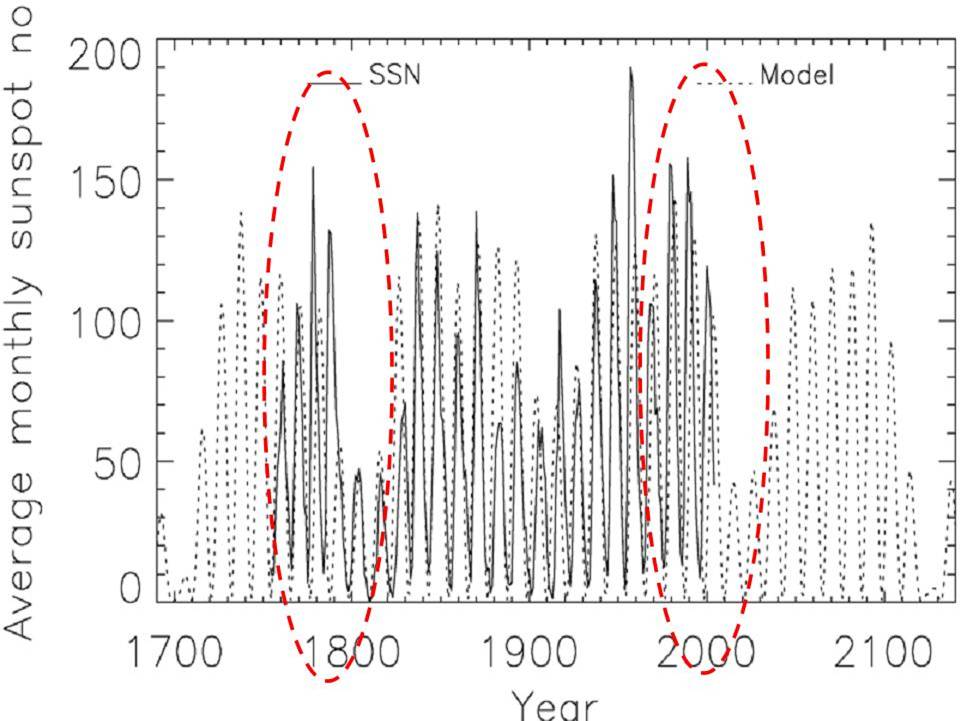Abstract: Solar variability is controlled by the internal dynamo which is a nonlinear system. We develop a physical-statistical method for forecasting solar activity that takes into account the non-linear character of the solar dynamo. The method is based on the generally accepted mechanisms of the dynamo and on recently found systematic properties of the long-term solar variability. The amplitude modulation of the Schwabe cycle in the dynamo's magnetic field components can be decomposed in an invariant transition level and three types of oscillations around it. The regularities that we observe in the behaviour of these oscillations during the last millennium enable us to forecast solar activity. We find that the system is presently undergoing a transition from the recent Grand Maximum to another regime.Notice the similarities of the last four cycles in terms of cycle length to the first four in the 1700s to early 1800s prior to the Dalton Minimum. Length of cycle 23 still not determined but will be at least 12.4 years.
This transition started in 2000 and it is expected to end around the maximum of cycle 24, foreseen for 2014, with a maximum sunspot number Rmax = 68 plus/minus 17. At that time a period of lower solar activity will start. That period will be one of regular oscillations, as occurred between 1730 and 1923. The first of these oscillations may even turn out to be as strongly negative as around 1810, in which case a short Grand Minimum similar to the Dalton one might develop. This moderate to low-activity episode is expected to last for at least one Gleissberg cycle (60 - 100 years). See full paper PDF here.
Notice the similarity to Clilverd's (2007) statistically based cycle forecasts.





Reader Comments
to our Newsletter